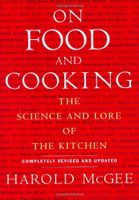Crustacean Texture
By Harold McGee
Published 2004
Like fish flesh, most crustacean flesh consists of white, fast muscle fibers. Its connective-tissue collagen is both more abundant than fish collagen and less easily dissolved by heat, so crustacean meat is less delicate and easily dried out than fish. But the protein-breaking enzymes in the muscle are very active, and can turn the meat mushy if they aren’t rapidly inactivated by the heat of cooking. These enzymes work fastest when the temperature hits 130–140°F/55–60°C, so the cook should either heat the flesh well above this range as quickly as possible, or get it just into this range (for maximum moistness) and then serve it immediately. Boiling and steaming are the most rapid heating methods, and the usual treatments for shrimp, lobster, and crab.
Part of
Advertisement
Related Recipes
-
-
-
-
Related Reference
-
-
-
-
Advertisement



